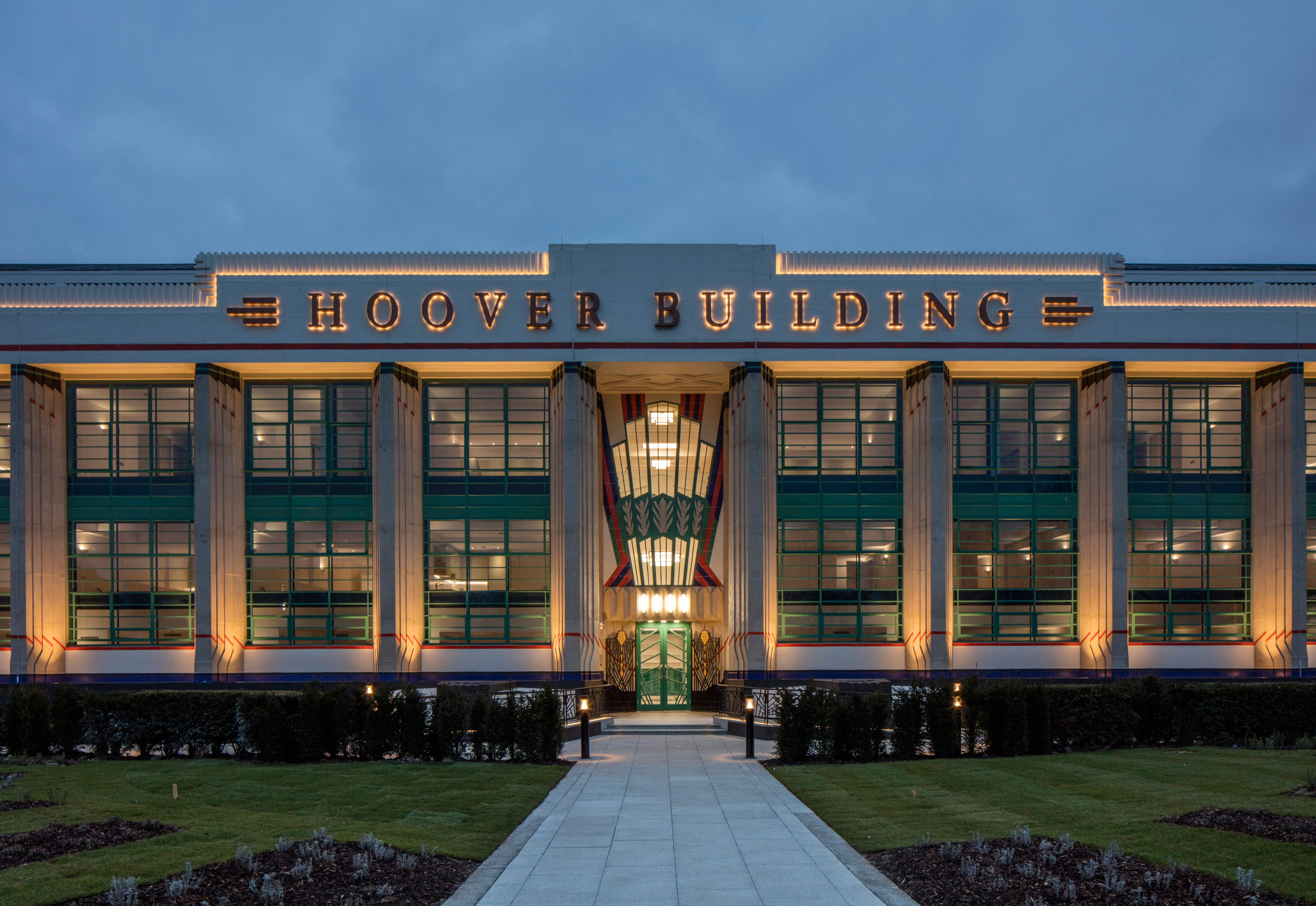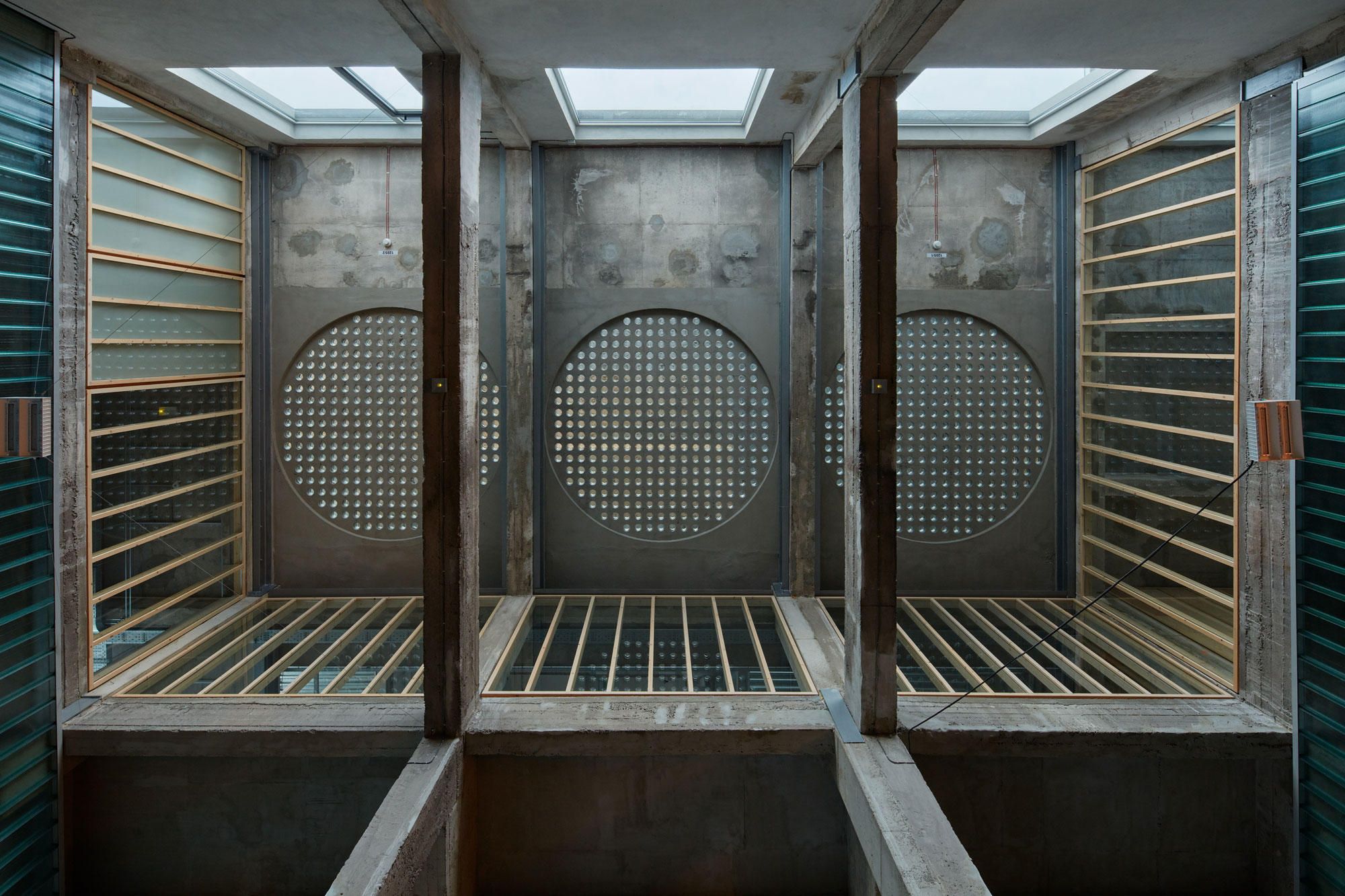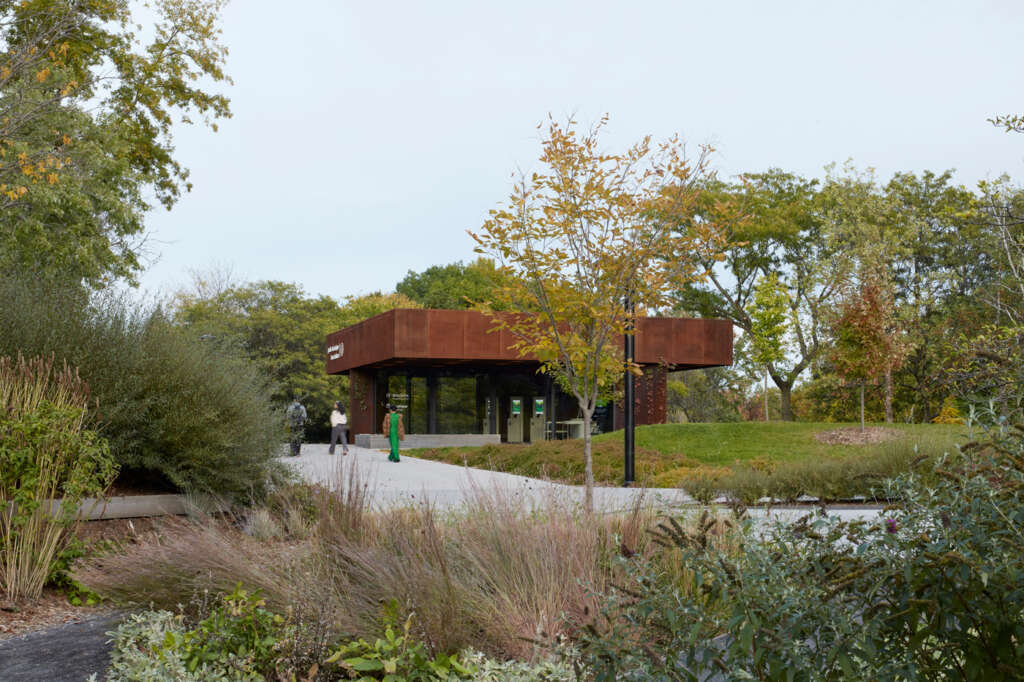
Montreal Botanical Garden Entrance Pavilion
Architect: Pelletier de Fontenay
Location: Montréal, Québec
Type: Pavilion
Year: 2024
Photographs: James Brittain
The following description is courtesy of the architects. Montreal based studio, Pelletier de Fontenay, presents the new Botanical Garden’s Entrance Pavilion. In conjunction with the metamorphosis of the Montreal Insectarium and the transformation of the entrance to Parc Maisonneuve, this project offers a redesigned and modernized access hub for this emblematic site. The new pavilion welcomes visitors, facilitates ticket sales, and provides information on the Botanical Garden and Insectarium. It also includes a smaller, separate check-in kiosk.
Developed in collaboration with a team of landscape architects from the City of Montreal’s Urban Parks Division, and the firm Lemay, the vision serves to link the world of Maisonneuve Park to the front court of the newly completed Insectarium. The project’s main challenge was to better orient and guide visitors towards the Insectarium and Botanical Garden, while respecting the cultural heritage of the site.
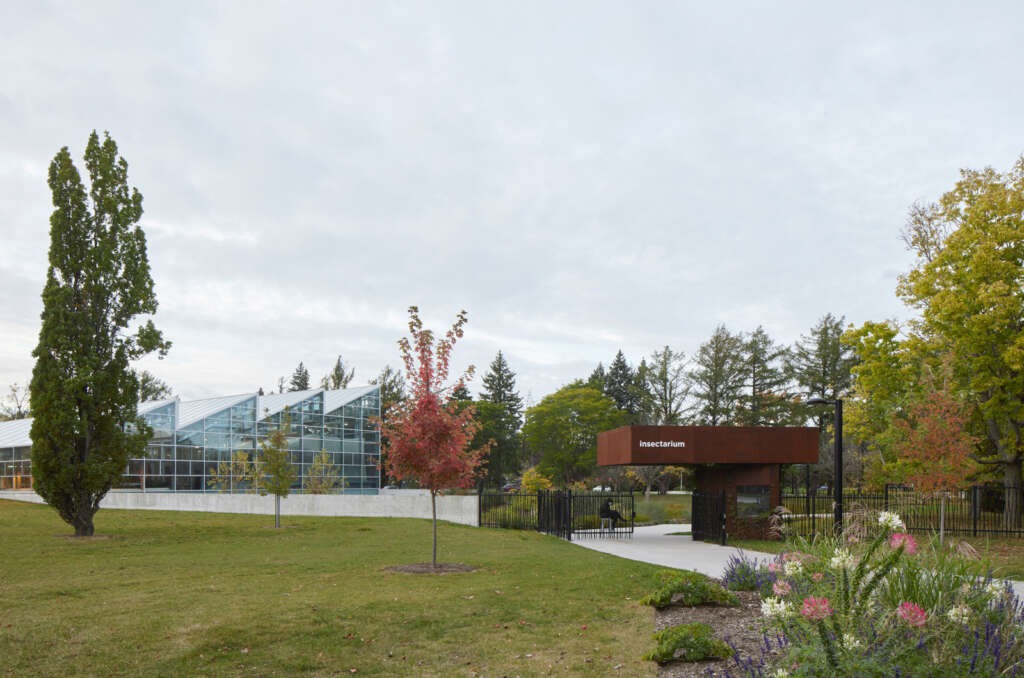
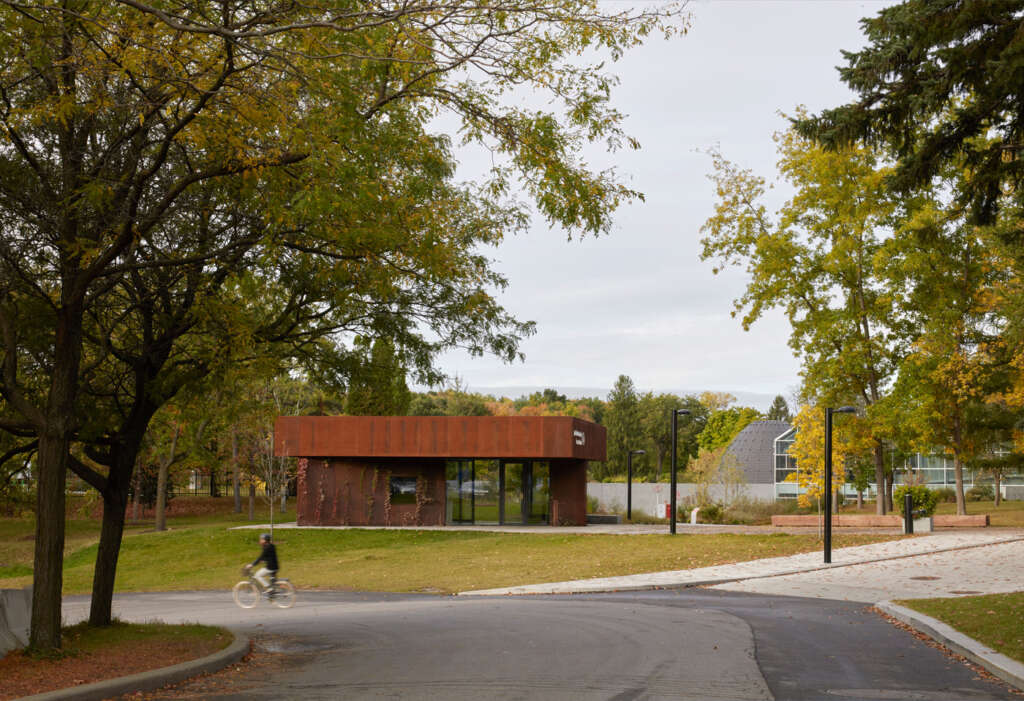
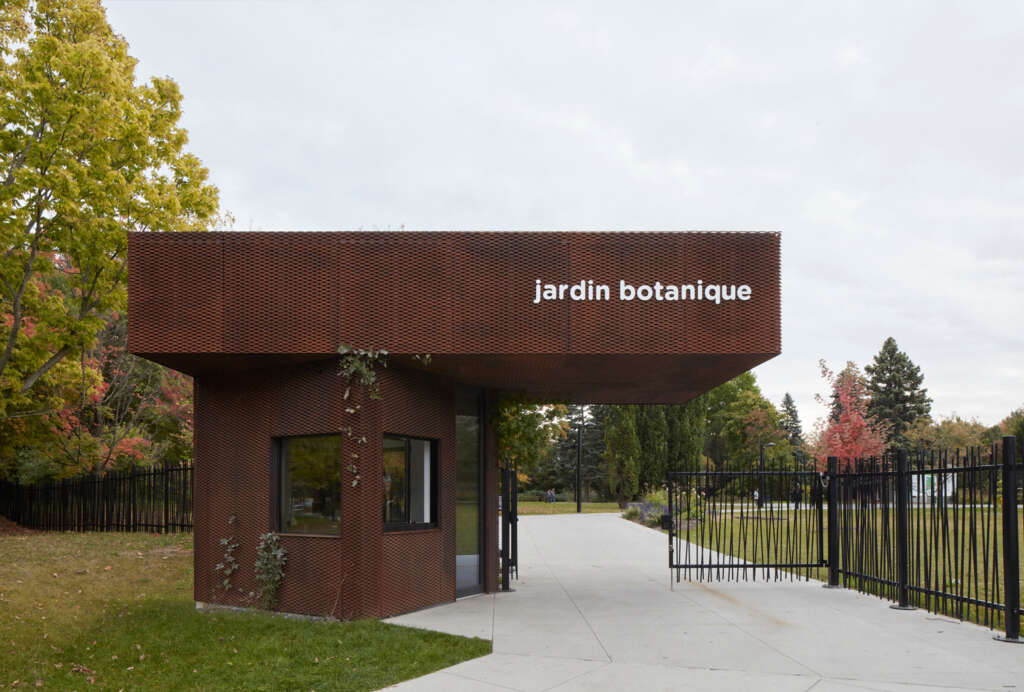
In studying the long history of park and garden pavilions, Pelletier de Fontenay’s team focused on the notion of the ruin as a bearer for several ideas that resonate with modern-day issues. A recurring theme in 18th and 19th century English gardens, the image of the overgrown ruin is deeply rooted in the romantic movement, which asserts the superiority of untamed nature, the imperfect, the sublime, and the overall nostalgia of a lost natural world. Architectural structures, once colonized by vegetation and other forms of life, propose a symbiosis between the built and the living world, a productive relationship in which architecture becomes a literal support for life.
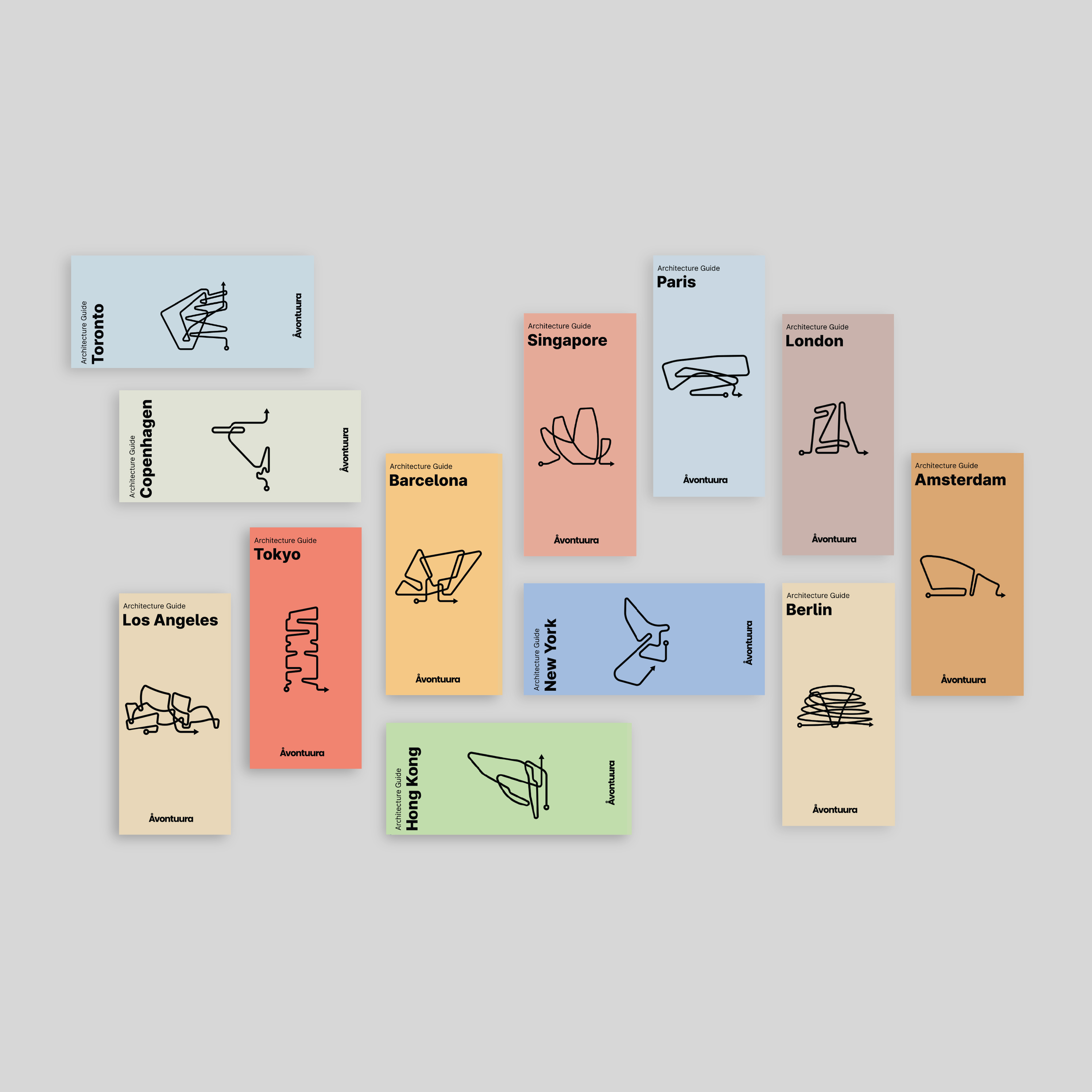
Introducing the Wandering Series:
Architecture Guides for Architecture Lovers
Explore all our guides at avontuura.com/shop
Much like a romantic ruin invaded by plants, the Montreal Botanical Garden’s Entrance Pavilion stands as a hybrid figure where architecture and nature meet. Humbled to its pavilion scale, the building, once fully covered by vines planted at its base, will become an infrastructure welcoming insects, birds, and small animals.
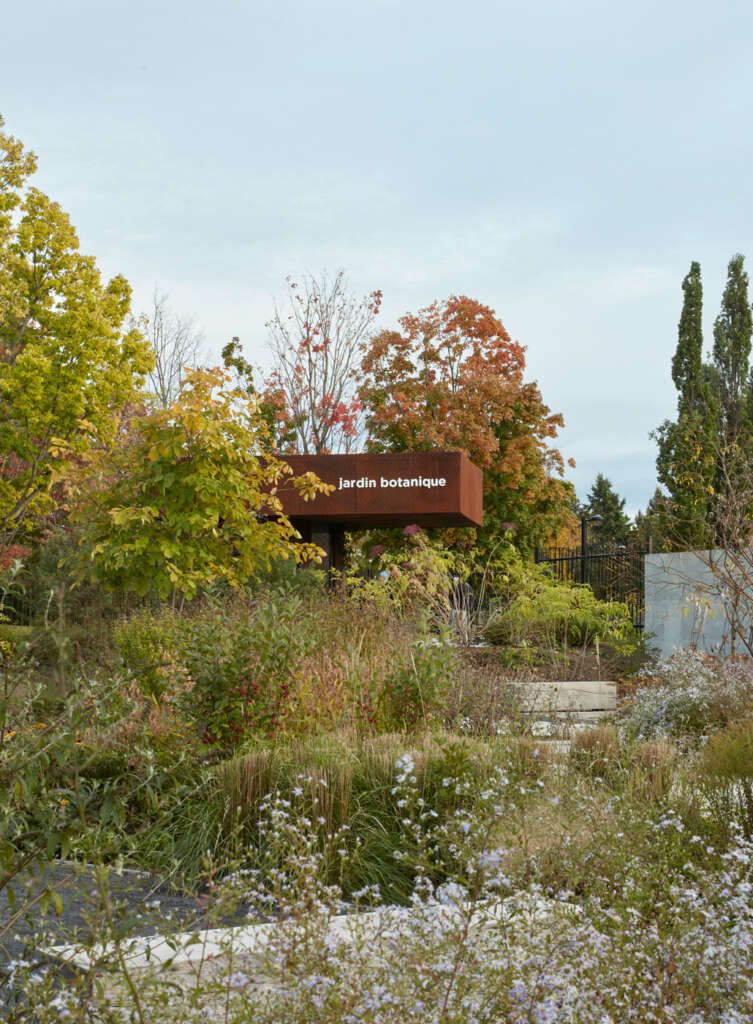
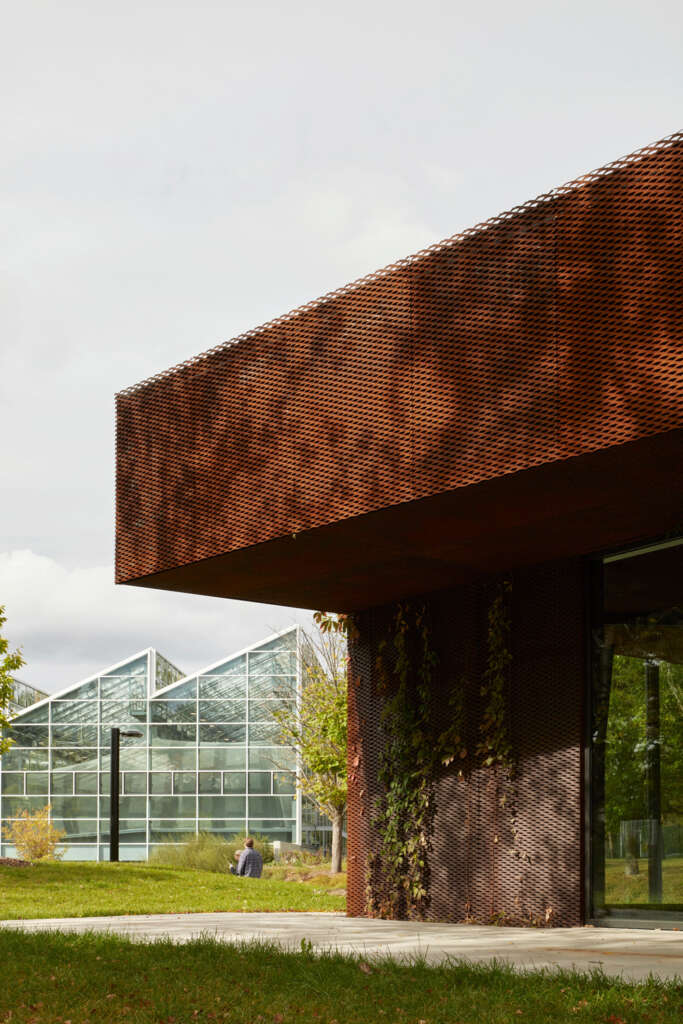
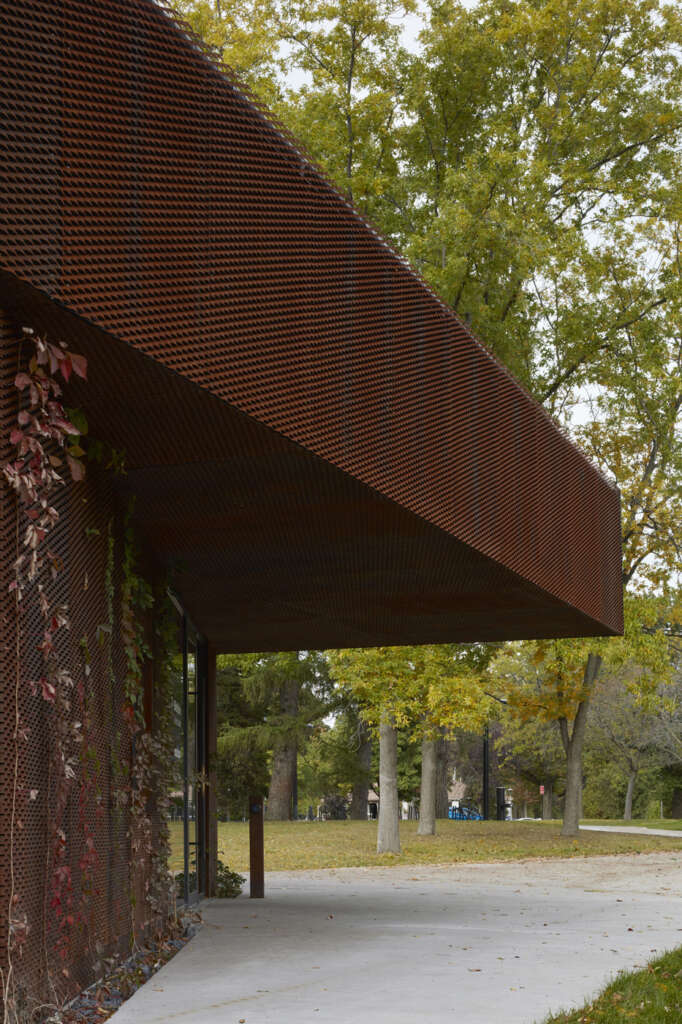
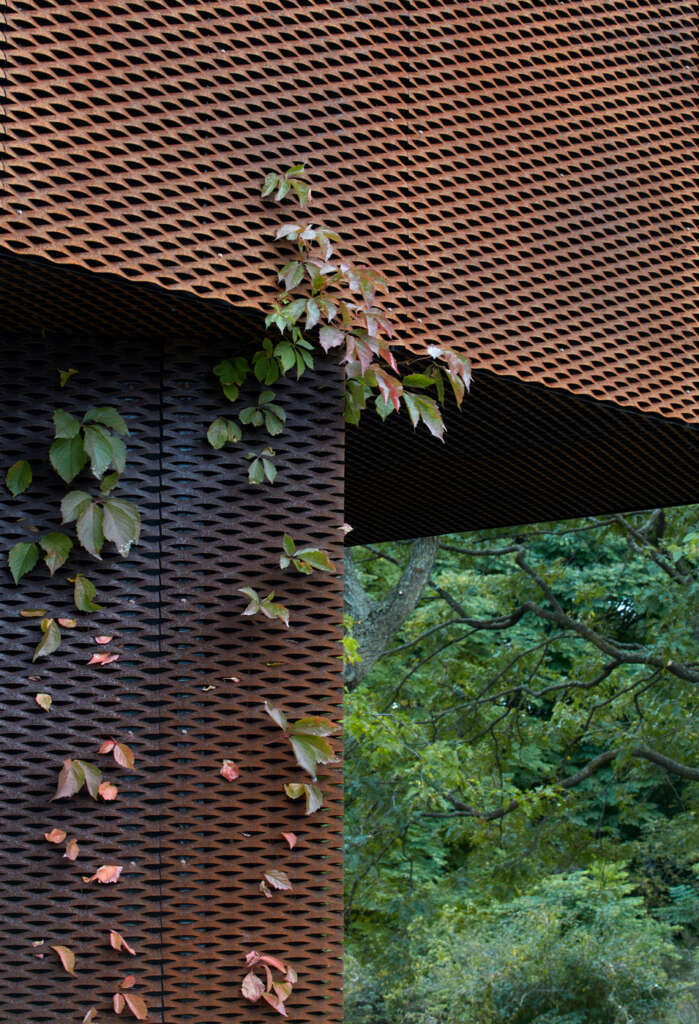
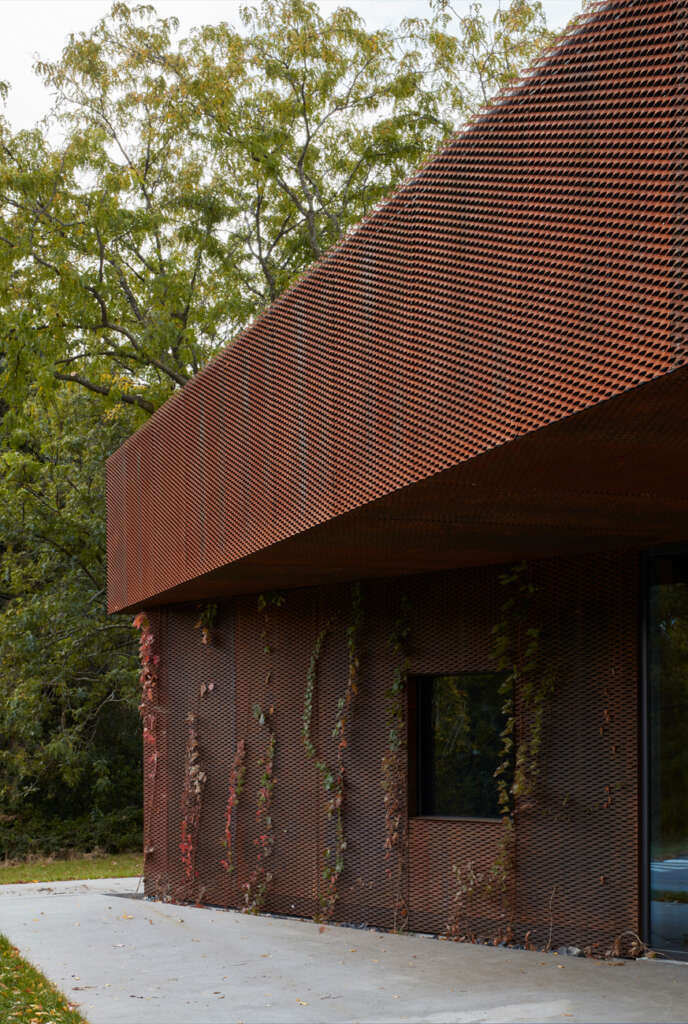
Visible from both Parc Maisonneuve and the Insectarium, the new reception pavilion is strategically positioned at the inflection point of the approach route. Its triangular plan is designed both to create a focal point in the landscape and to manage the flow of traffic: one enters on one side and exits through the other, in a natural pathway towards the entrance to the Botanical Gardens and the Insectarium. At the base of the volume, the triangle’s corners form the pillars which support a wide, square-shaped roof. The interaction of the two geometries produces generous roof overhangs, offering protection from sun and weather. The entrance and exit areas become sheltered meeting points, or places to queue up during busy hours.
The large roof, which extends from interior to exterior, supports the notion of landscape continuity. As soon as spring temperatures permit, and until mid-autumn, the pavilion’s large sliding doors can remain open, eliminating the boundaries between inside and out.
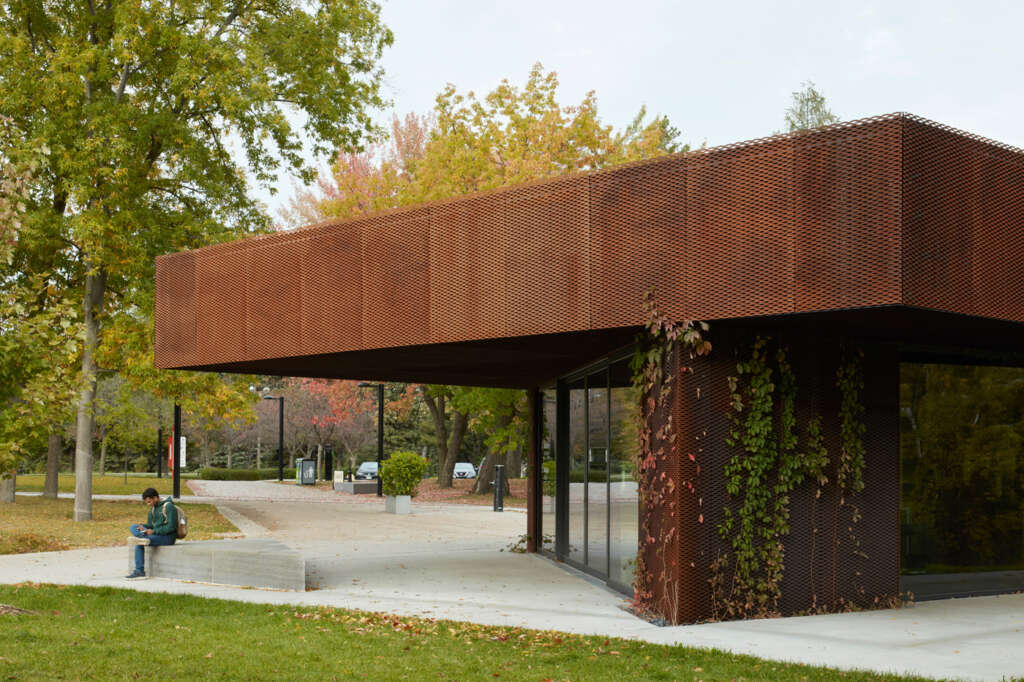
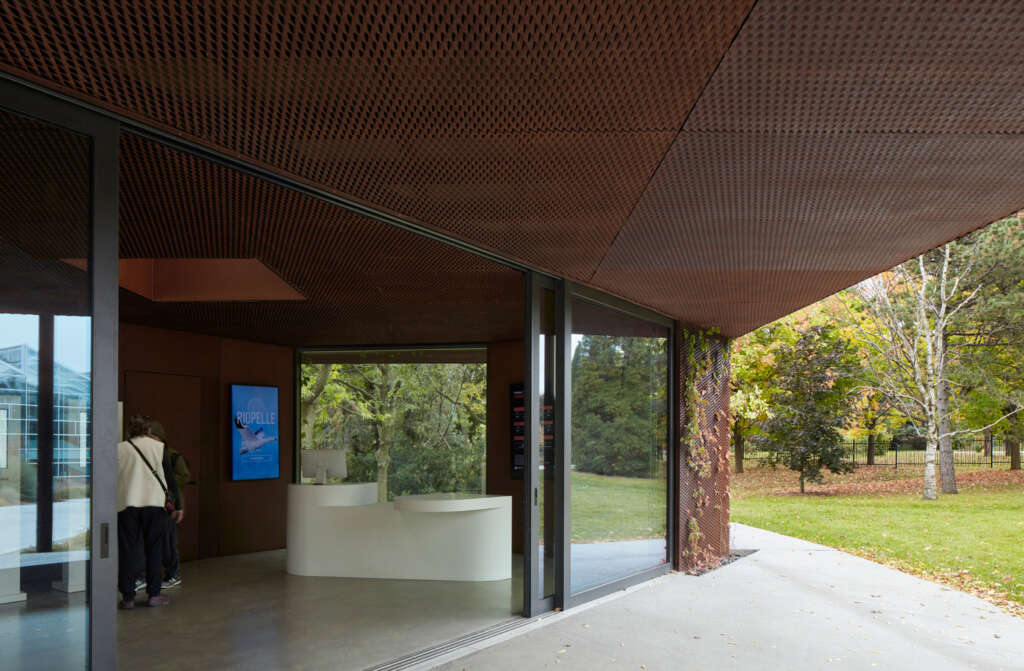
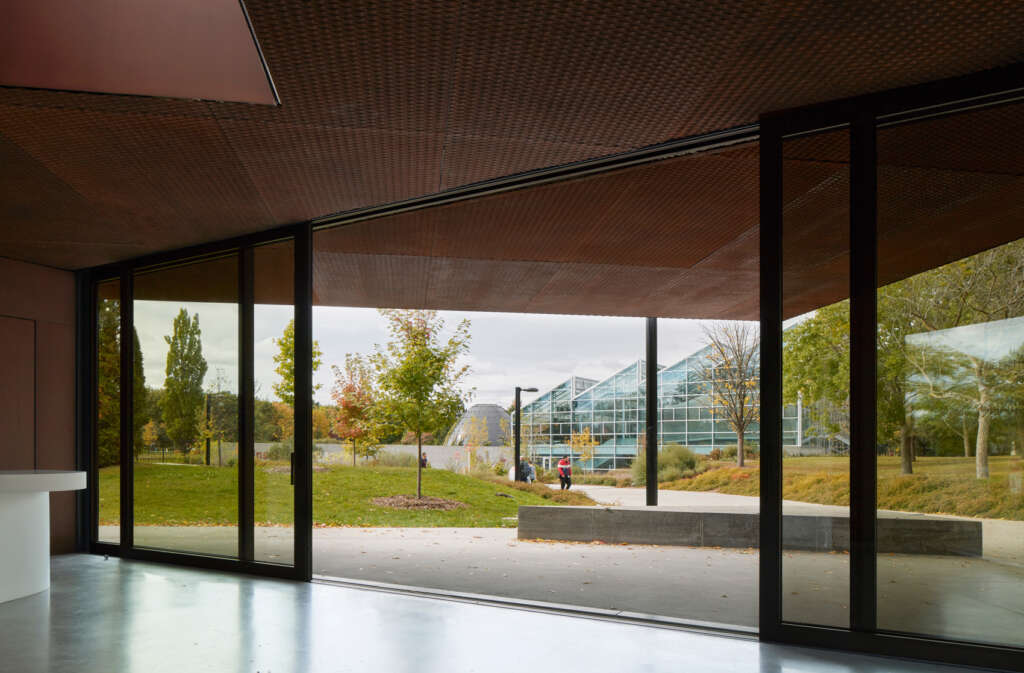
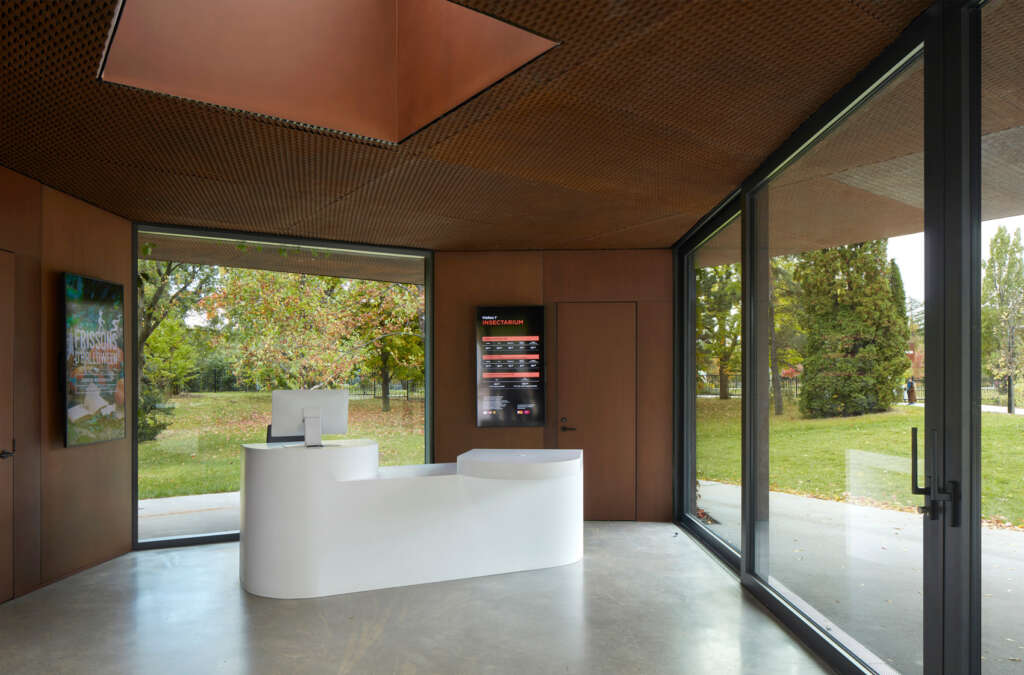
The ability of the building to open wide to the landscape is fundamental to Pelletier de Fontenay’s approach to this project. Visitors can feel the wind and heat, hear the birds, and smell the nearby forest while they plan their visit, obtain tickets at the digital terminals, or get information at the counter. From a bioclimatic standpoint, being in tune with the weather also means that for a good part of the year there is no need for heating or air conditioning.
The assembly and superimposition of two simple shapes – the triangle and the square – confer a primitive quality on the overall structure. Far from emphasizing its construction, the pavilion’s tectonics are completely sublimated in favor of a single-material skin that covers all surfaces homogeneously.
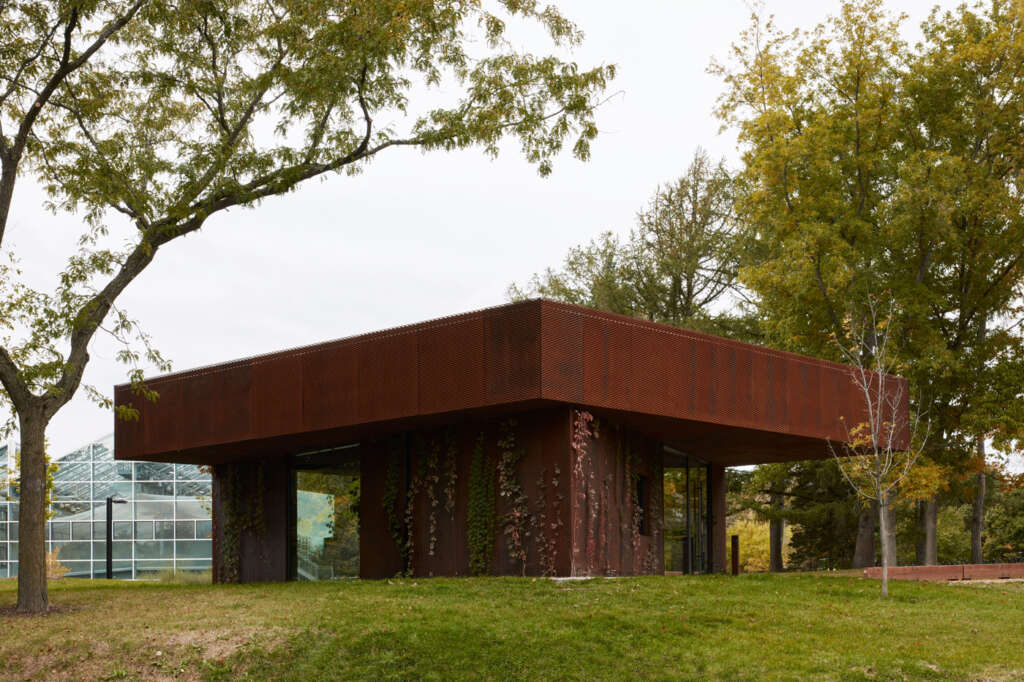
This skin is made entirely of expanded Corten steel, except for the vertical interior faces, where the steel is left smooth. The project goes against the idea of architecture as assemblage, as a mere technical expression. Instead, constructive articulations make way for a more monolithic, enigmatic, archaic representation. Conceptually, visitors might well get the impression that the structure pre-dates the garden that now surrounds it.
The use of Corten steel supports the idea of a structure worn and weathered with time. The expanded structure of the sheets provides an ideal support surface for vining plants, and the size of the openings is calibrated to allow them to navigate on either side of the skin, entering the architectural cavity in some places only to emerge higher up. As the Corten steel cladding gradually oxidizes and the structure is colonized by climbing plants, the pavilion’s appearance will evolve over time, evoking a ruin gradually overtaken by nature, and thereby entering a symbiotic relationship with it.
Project Details
- Project name: Botanical Garden Entrance Pavilion
- Location: Montréal, Québec
- Opening date: 24 November 2023
- Client: Ville de Montréal
- Architecture: Pelletier de Fontenay
- Landscape architecture: Lemay
- Civil, stucture, mechanical engineering: EXP
- Photography: James Brittain

